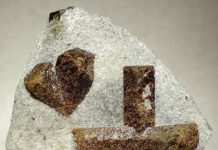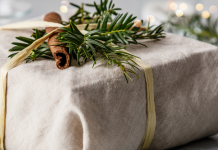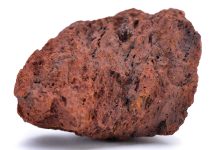
Ventura Beach rock collecting isn’t top of the list in field guides yet I’ve crafted wonders with materials sourced from a single mile-long stretch of Ventura Beach I had spent years walking, never seeing the riches. The only requirements? Open my eyes. Think outside the box.
I offer this article as encouragement for you, too, to discover treasures hidden in plain view in your backyard, be it an ocean beach, a lake, a Midwest gravel pit, or a Mississippi Riverbank. Work with what you’ve got. The possibilities may surprise you!
In a Pandemic, Collect Local/Produce Local
It took a global crisis for me to realize this. While confined close to home during the pandemic, I took weekly Ventura Beach walks with my dog, Symon. Along the way, I discovered even dull rocks hold potential if viewed with the lapidary eye. The “COVID pause” brought a new perspective to my collecting and lapidary activities, serving as inspiration to launch a project I call “The Ventura Beach Collection.” My goal? Collect local. Produce local.
The results have been diverse. While my eyes were initially drawn to traditional lapidary stones like jasper and travertine, I found material I never suspected held lapidary potential.

“Catsup & Mustard:” Ventura Beach Brecciated Jasper
The first stones to capture my attention were brecciated jasper pebbles. As historian for my local Ventura Gem & Mineral Society (VGMS), I wasn’t surprised. With war-time gas rationing when VGMS was founded in 1944, initial field trips were just down the street to the Ventura Pier to collect “catsup-and-mustard” jasper cobbles in shades of red and yellow. During the pandemic, I picked these up on my dog-walking adventures. While I searched for jasper, Symon sniffed and peed on seaweed. In other words, it was a win-win for human and canine.
For anyone thinking of jumping in and commercializing Ventura Beach jasper, be aware it really isn’t all that good. Although folks in VGMS have collected it for 80 years, it’s never made it to the big leagues in rockhounding circles. Often, cobbles prove fractured or pitted when slabbed and sometimes refuse a brilliant shine. While one piece is terrific, the next may split before you get it out of the slab saw. Not surprising given that these are beach cobbles derived from varied sources and clattered by waves.
So maybe it’s not the finest stuff, but it’s self-collected just minutes from my home during fun morning walks. After learning to properly high-grade before bringing a cobble into the workshop, I’ve been pleased more often than not and have produced a bounty of colorful cabochons and buckets of tumble-polished pebbles. And when finding a mini-boulder, I turn to fellow VGMS member David Springer, a sphere-making master.
Wave-Tossed Travertine
I’ve picked up another traditional lapidary stone: travertine. While travertine cobbles are relatively rare here, Miocene shale formations exist on- and off-shore in Ventura County, and you do occasionally find nice nuggets of travertine worked out from such formations. In overall character, they’re similar to silver lace travertine from the Calico region in California’s Mojave Desert although they lack the black dendrites of Calico material.
Specimens take a high polish in just a few minutes on the Genie due to travertine’s softness. A dog-walking friend was bowled over after she gave me a pebble from Ventura Harbor and I returned it cabbed in a commercial setting. If I’d only known in my bachelor days how easily impressed young ladies are by shoddy workmanship on a free rock! Sigh.

Rock-Solid Granite
I never thought of Ventura Beach as a source of granite. The great Sierra Nevada? Sure! Yosemite’s Half Dome? You bet! But Ventura, where all rock is sedimentary? As it turns out, we have granite galore, perhaps delivered to beaches via the Ventura and Santa Clara rivers. Turning to the U.S. Geological Survey, I found that while 87% of the county is cloaked in sedimentary deposits, our Transverse Ranges do host quartz monzonite, quartz diorite and granodiorite. All come down to one word: granite! (Okay. Three words: granite-like rocks.)
My wife’s family hails from Maine, where some jewelry shops offer granite pendants and bracelets featuring pink, yellow, orange, red, and tan varieties to be found in a state that seems entirely composed of speckled granite. Soon, I had produced several cabs from multi-colored granite I’d never noticed before.
Picturing Pictures in Stone
In addition to granite, I soon found so-called “picture stone.” Picture stone is usually jasper or silicified rhyolite. Earthtone shades of yellow, tan, brown, rust-red, and light forest green predominate. The best takes a mirror-like polish. Other varieties, though, are more dull.
So what’s the appeal? Such stones often have irregular bands, choppy concentric patterns, dendritic formations, or unusual stains producing effects that look like an abstract painting or a dramatic desert landscape; hence the term picture stone. I began picking up small cobbles that I’ve taken to calling “Ventura Beach Picture Stone.” Some are soft and porous and full of cracks you don’t see until you’ve allowed them to dry. But others are harder and take a polish; not high-gloss, but a velvety sheen that’s pleasing enough.
This is definitely not jasper. Is it from a poorly silicified rhyolite formation washed down from the Transverse Ranges? For instance, rhyolitic volcanic eruptions occurred during the Miocene Epoch and such formations are known in our local mountains.
Or is it porcelaneous shale or mudstone? I suspect the latter. While I’ve cut and cabbed some pebbles, I’ve left most in their natural shapes while buffing them on my Genie. They may not look like the finest gemstones in the world, but they are interesting, and some have proven worthy candidates for wire-wrapping.

Make a Wish!
Some rocks I’ve found on Ventura Beach don’t seem much like lapidary stones. Yet ordinary rocks aren’t necessarily ordinary. Take wishing stones. Per lore, should you find such a rock, trace a finger around the line, close your eyes and make a wish. Throw the stone into the sea as far as you can or gift it to another person and your wish will come true.
I’ve discovered countless Wishing Stones on Ventura Beach and have been packaging them with cards detailing the legend to give away in grab bags at our Kids Booth during our annual VGMS show. I’ve also dressed some up a wee bit. It doesn’t take long to buff one with a Genie, and it’s easy to drill a hole or craft a basic wire-wrap cage to hang the stone from a leather cord or twine to provide just the right rustic look. Rather than return them to the sea from which they came, I give these away as gifts—but only after running a finger around the lines while making a wish!
Skipping Stone Sculptures
While wishing stones have distinctive appeal, other stones are just plain bland. Continuing my theme to “collect-local/produce-local,” I tried something new. New for me, that is. I often come upon thin gray cobbles. Smoothed and rounded by waves, they’re good for six skips on flat water between waves. But I learned they’re good for something else.
One winter morning, when I picked up the perfect skipping stone and prepared to fling it, a dolphin surfaced right in front of Symon and me. “Don’t hit me with that rock!” she seemed to say as she gave a mighty spout and took a dive. Rather than skip the stone, I rushed home, fished out my Dremel, and proceeded to carve an image of that dolphin into my skipping stone. I’ve since used such stones to carve images of whales, sand dollars, seagulls and mermaids. Even an ordinary skipping stone holds lapidary potential.

Sea Glass Fun
I began playing with sea glass from broken bottles rounded and frosted while rocked in sand by waves. It’s usually in pastel shades of white, blue, green or root beer brown. If you find a large piece on the order of an inch, you can produce a respectable pendant very quickly by gluing on a bell cap or try wire wrapping or drilling a hole and attaching a pinch bail. To produce smaller beads or pendants, all you need to do is drill a hole for inserting a string, pinch bails, or jump rings. Sound simple? Well, yes and no.
Drilling holes in glass is a trickier process than drilling wood with the vintage Sears Craftsman I bought in 1978. Fortunately, many YouTube videos pop up if you google “drilling sea glass.” All underscore the need to work in water and proceed slowly because heat builds up around a drill bit, which easily splits the glass. Don’t work too close to the edge of the glass and don’t push. Let the diamonds coating the drill bit do the work. With the right precautions, you’ll produce a result to string and wear.
More Fun With Sea Glass: Sparkling “Beach Opal”
In addition to letting sea glass serve as a gem in and of itself, I found another use for it. I became entranced by rainbow colors shimmering in the interiors of mussel shells littering the beach. The nacre of mussels fresh from the sea shines iridescently bright. Drawing inspiration from classes I had taken for crafting opal triplets, I determined to craft a doublet from this beautiful shell to produce an “opal” of sorts. Through trial and error, I learned to match the curves of a mussel shell with the curves of clear beach glass as a cap secured in place with epoxy then trimmed to size and ground, rounded, and polished like a cab. Not really opal, but if done right, this poor man’s doublet gives a satisfying sparkle.
Lapidary Materials You Might Find on a BeachMaterials to seek on a beach vary with the beach, but here are a few you may find:
|
This story about Ventura Beach gems previously appeared in Rock & Gem magazine. Click here to subscribe. Story and photos by Jim-Brace Thompson.















